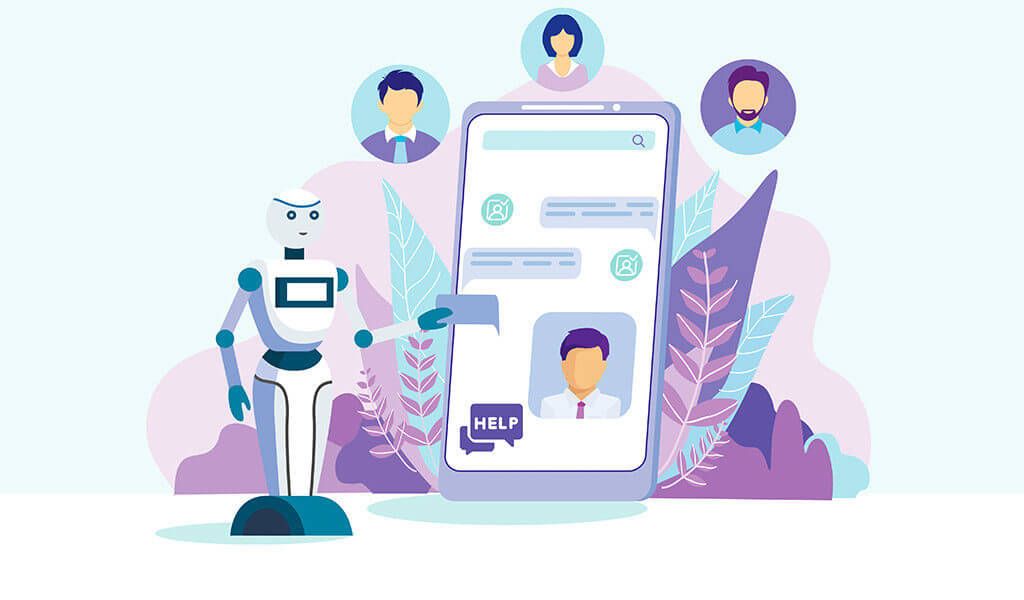Today’s retail consumer enjoys tremendous power and has a wide range of tools and information at their disposal to support buying decisions. With online retail sales topping $861 billion in 2020, 44% higher than 2019, it’s easier than ever for your customers to browse, compare and solicit input from influencers and peers to help them on their shopping journey.
This puts pressure on you, the retailer, to deliver the frictionless, informative, less sales-y, experience your customer demands. In fact, your retail business depends on it. Research from Forrester found 63% of people will leave a brand after one bad experience and more than two-thirds of customers won’t wait more than two minutes for assistance during their digital journey, whether it’s on mobile, desktop, or other channels.
Chatbots are a tool more retailers are using to help them quickly personalize the retail experience and boost sales, all while deepening engagement. But in order to make that happen, if you’re a retailer, you need to shift your perspective about chatbots as a service agent to see them instead as an always-on concierge. Here’s how chatbots can help your retail store start important sales conversations, improve your customer’s digital experience, and boost your bottom line.
Ads That Engage
Today’s chatbots have leveraged machine learning, AI, and natural language processing to make the most of the question-and-answer pattern that anchors the technology. In short, chatbots are not a tool to simply answer questions, taking the burden off employees so they can work on other tasks. Today’s bots initiate and drive conversations and can stick with the customer long after the initial engagement. How? Deeper learning translates to deeper conversation.
It may sound strange, but an online advertisement can also be a vehicle to initiate very personalized bot-based engagement with your customers. Mattress maker Purple embedded its own chatbot into its Google AdLingo ads. Instead of a user clicking on an ad for a static experience where the retailer offers a lot of information, the bot starts and drives the conversation, putting the customer’s needs center stage.
Purple’s conversational display ad is referred to as a “mattress finder.” The bot wants to know about the customer’s sleep style and preferences. Eventually, after a few exchanges, the bot offers up a recommendation. It can then, depending on the engagement pattern, steer the conversation toward checkout and delivery or to store locations where you can test drive the mattress, all the while attempting to gather contact information for future connection.
Social
Social media has become the dominant advertising channel for retailers today. It’s a powerful environment to promote seasonal products and sales, but while your customers and prospects engage with your social channels, your chatbot can personalize the experience and build your brand.
German shoe retailer Deichmann solved some of its customer experience challenges with the help of its Facebook Messenger chatbot. Through questioning, the chatbot learns about the customer’s shoe preferences. Instead of feeling overwhelmed by a massive online catalog of shoes, the chatbot, after a few questions, offers up a selection the customer wants and even suggests one of the company’s locations try the shoes on. Again, the chatbot was able to initiate a conversation solely focused on the customer’s needs and deliver the product and experience desired.
While nurturing the online experience and sale is critical, this type of engagement may also spur more in-store sales as well. Even with climbing online sales, retail shoppers still spend more inside your store than online, thanks to impulse sales or finding complimentary items to purchase they didn’t think of while engaging with your brand on digital channels.
The Re-Engagement Factor
Both of these examples illustrate how chatbots can get important conversations started on your customer’s journey to a personalized experience, ultimately helping drive sales. But this engagement also arms your chatbot with important information that can be used later to re-engage your customer or prospect.
Your chatbot is a great tool for new product notifications, sales, and promotions, and chatbot messages enjoy far higher open and conversion rates than email blasts and other promotions. If it’s what your customers prefer, you can retarget through email and social campaigns as well. Your chatbot gathers the information you need to initiate contact on those channels.
Clean And Responsive Human Hand-offs
Understanding the limits of your chatbot is important, too. As a retailer constantly studying your audience, you can learn that it’s simply good business to hand the conversation off to a human. The key here is to make sure the transition is fluid and quick. Remember, your customers are busy. They don’t want to wait more than two minutes to continue their experience, as Forrester noted.
Conclusion
Using chatbots to boost sales and improve the experience for your retail customers is not a growing fad. In fact, it’s a necessary part of doing business today. To get the results you want, the first step is to make sure that a shift in thinking about chatbots has occurred for your technology and marketing teams. Chatbots are less about service, more about the experience. They start valuable conversations that nurture sales and improve brand awareness through personalized experiences.
Follow Techdee for more informative articles.
